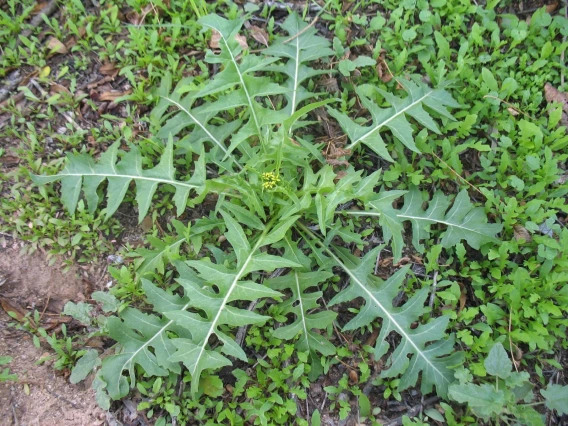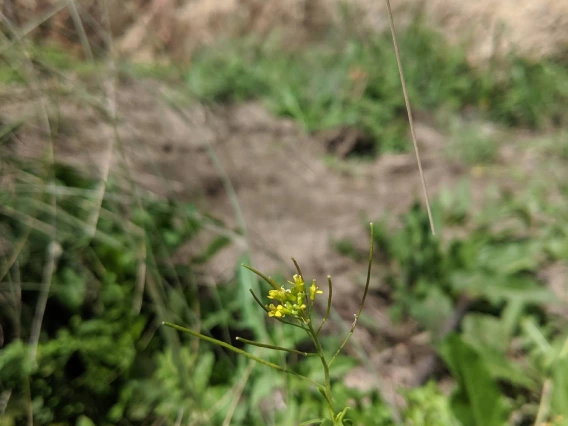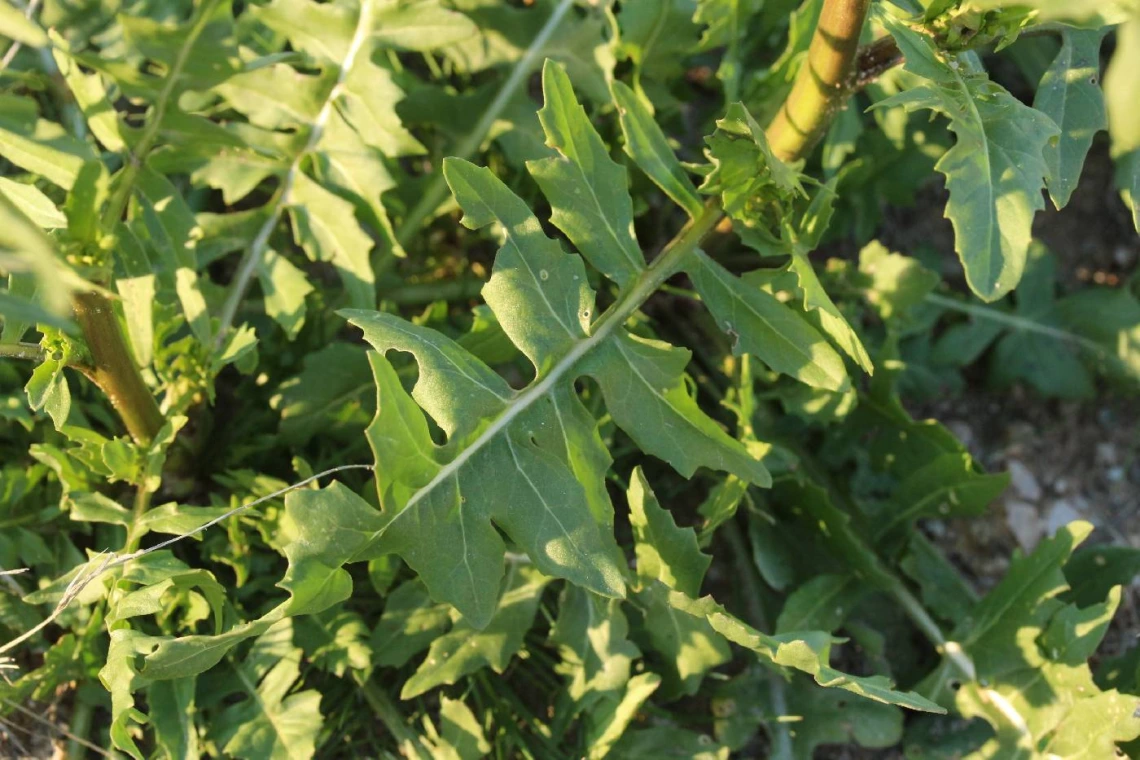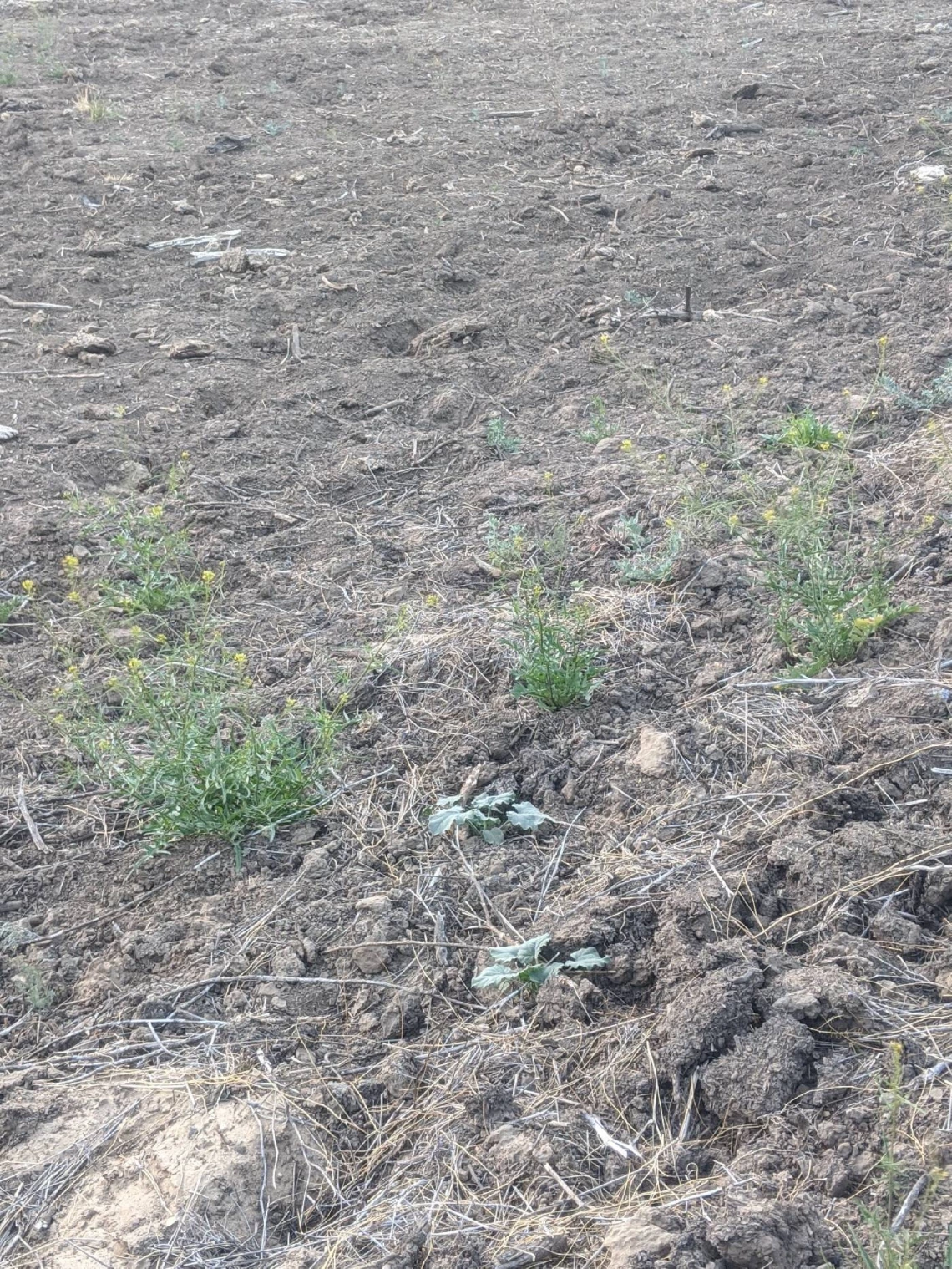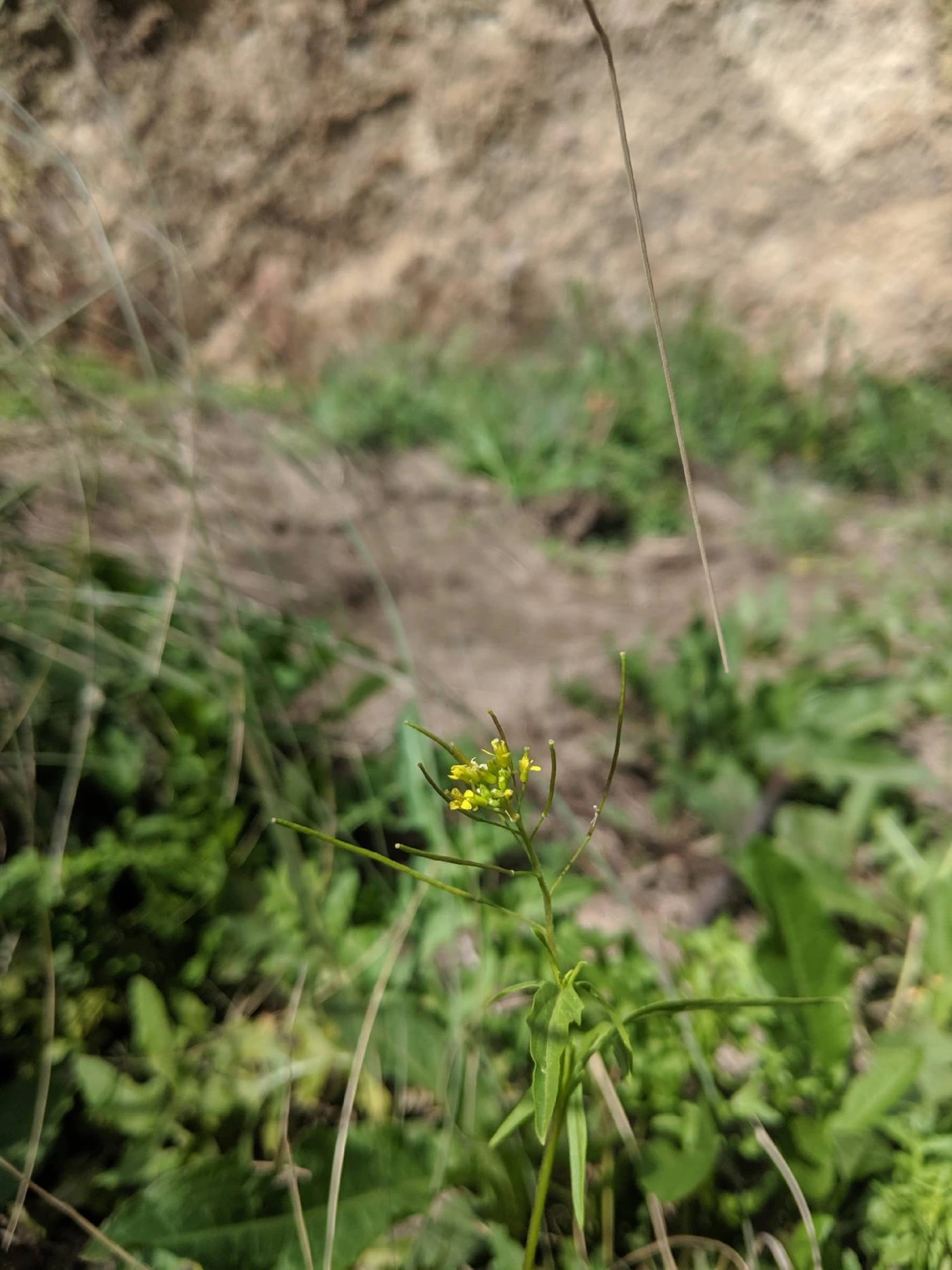Image

rosette
L Landrum
Common Name(s)
London rocket
Rocket mustard
Tumble mustard
Scientific Name
Sisymbrium irio
Family
Mustard family (Brassicaceae)
Reasons for concern
London rocket is highly competitive and outcompetes native species, decreasing biodiversity. It recovers quickly after fires, so native plants don’t even have a chance to recover after a fire disturbance.
Classification
Non-native
Botanical description
Erect broadleaf annual herb grows up to 3 feet tall at maturity
Leaves
Up to 6 inch basal rosette leaves with a central vein, alternating deeply lobed leaves on main stems up to 8 inches long with a pointed terminal lobe
Stem(s)
Up to 3 feet with several branches near the bottom
Inflorescence
Pale yellow round terminal clusters with 4 leaves and ⅛ inches in length
Fruit
Slender, linear green pod ½-1 inch long and less than 1/16 inch wide
Native to
Mediterranean
Where it grows
Disturbed areas like roadsides, lots, and gardens, and irrigated fields
Lifecycle
Annual
Reproduction
By seed
Weedy Characteristics
London rocket can produce thousands of seeds per plant. These seeds can survive up to 10 years.
Control Strategies
Manual removal is most effective when the plant is young, during the basal rosette stage. Repeat mowing is effective before the plants go to seed. Herbicides like glyphosate are most effective when used on young plants.
References
- https://acis.cals.arizona.edu/agricultural-ipm/vegetables/vipm-archive/vipm-weeds-view/london-rocket-(sisymbrium-irio)-(2022)
- http://southwestdesertflora.com/WebsiteFolders/All_Species/Brassicaceae/Sisymbrium%20irio,%20London%20Rocket.html
- https://swbiodiversity.org/seinet/taxa/index.php?taxon=Sisymbrium+irio&formsubmit=Search+Terms
- https://plants.ces.ncsu.edu/plants/sisymbrium-irio
- https://www.cal-ipc.org/plants/profile/sisymbrium-irio-profile/
- https://cales.arizona.edu/yavapaiplants/SpeciesDetailForb.php?genus=Sisymbrium&species=irio



